Roxy Paine explores nature, folklore and geometry in his latest exhibition
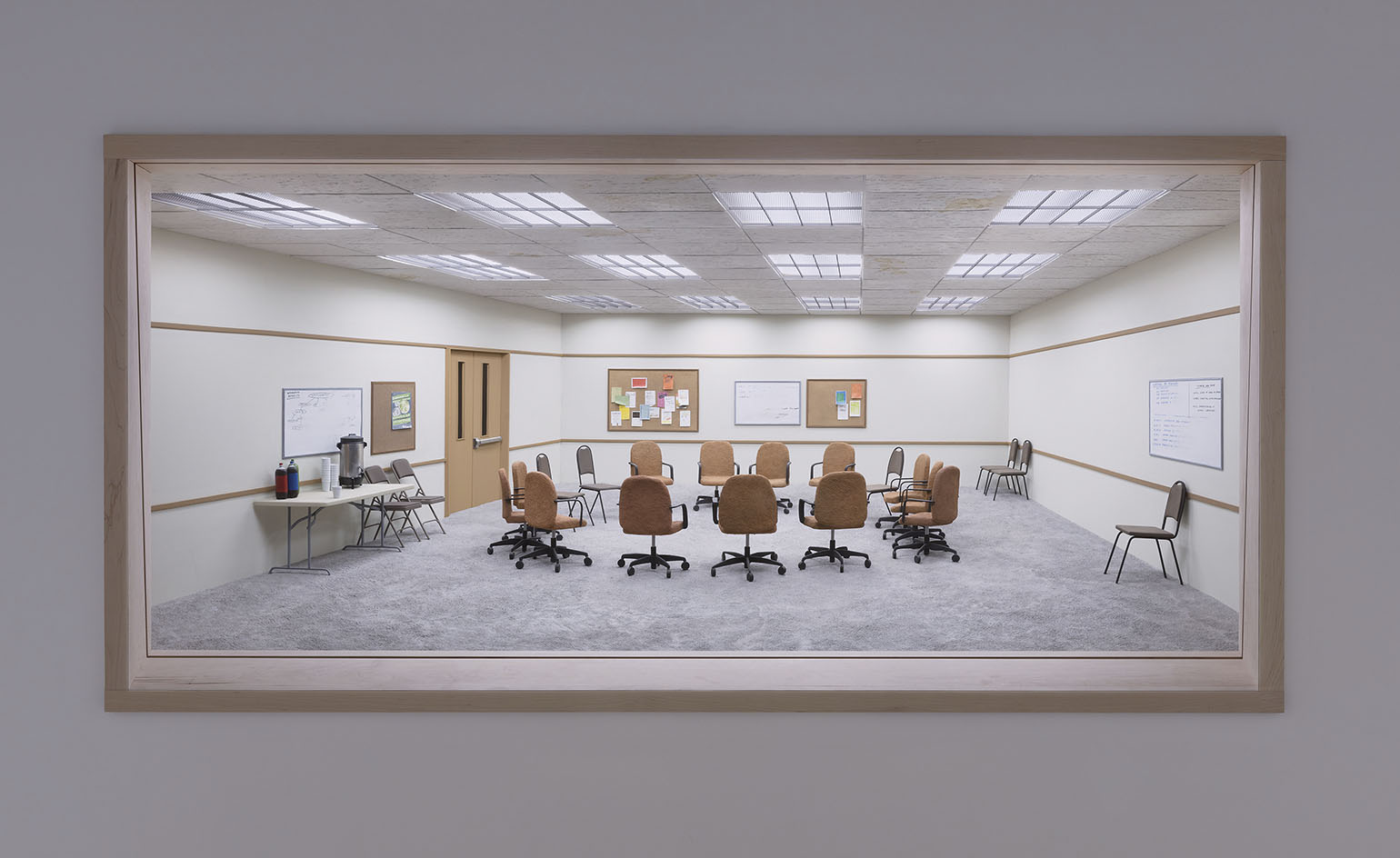
Embers glow and flicker amid the hyperrealistic charred polyester resin and fibreglass trees, the light intentionally dim. It’s as if you have stumbled upon a suspended moment in time; a forest is hazy in the distance. Within seconds, artist Roxy Paine captivates with his new work Desolation Row on view as part of his two-venue exhibition at New York’s Paul Kasmin Gallery.
A semi-hybrid between Paine’s tree-like Dendroid series and his dioramas, Desolation Row condenses a half-mile viewpoint of a burned down forest into seven feet. ‘I’ve always been interested in our relationship to nature — how it affects us and how we obsessively alter nature and seek to control it,’ Paine says. ‘To me it’s a very melancholy piece. It’s dealing with the aftermath. Is this fire manmade? Is it because of how we have altered the planet? Is it just a natural fire?’
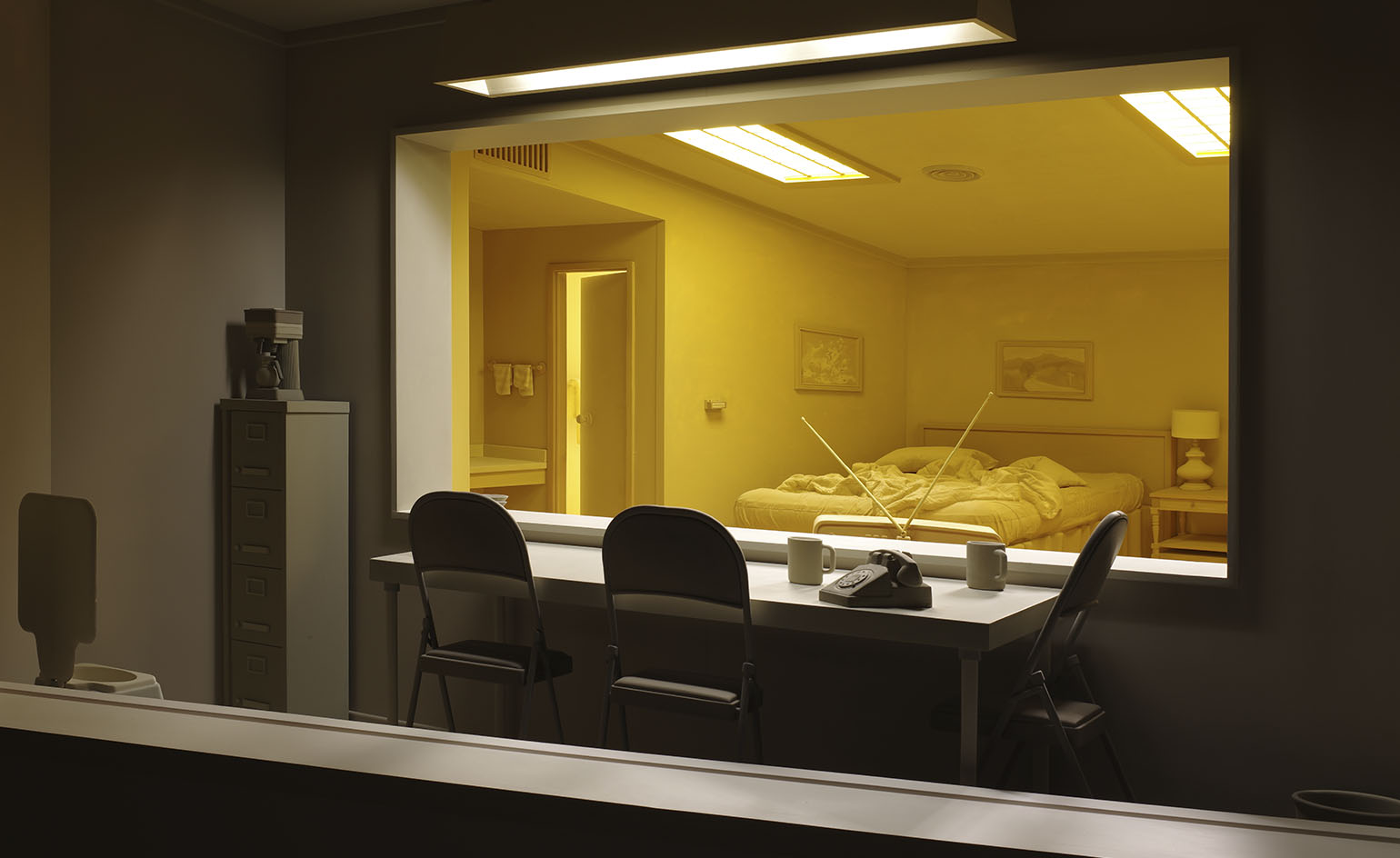
Installation view of ‘experiment’, 2015
Much of Paine’s work evoke questions of whether something is or is not. His latest series of Dendroids, for example, resemble silver tree sculptures, but study many dendritic forms, such as the branching human vascular and digestive systems and neuron structures. Many of his Dendroids illustrate the connectedness of human and nature — at times literally — such as in After the Flood,in which a tree is entangled with manmade detritus after a natural disaster.
Paine’s dioramas, experiment and Meeting, express this tension between man and nature from another angle. In experiment — a fictional scene of the true CIA experiment MKUltra, during which the CIA drugged unsuspecting people with LSD and hallucinogens — the viewer is positioned in front of a hidden surveillance room behind a two-way mirror that faces an empty bedroom. This perspective is heightened by the absence of people in the work, forcing the viewer to place oneself into the scene.
Meeting,which is intended to convey a community space where a substance support group could gather, uses the circular form as its anchor. ‘This idea of the circle of chairs and circular geometry is such an an ancient one,’ Paine says. ‘But then it is in this airless, window-less space with fluorescent lights.’ He underscores this relationship between the old and new by writing entries from a dictionary of folklore motifs on the whiteboard, emphasising the stories we tell repeatedly across time and cultures.
Although purposely kept separated to preserve their discrete narratives, Desolation, the Dendroids, and the dioramas all offer different perspectives of humanity. ‘Humans generally think they are so apart from animals and nature,' explains Paine. ‘We build these elaborate encasements around our instincts and disguise them, but ultimately we’ll be determined by our primitive brains.’
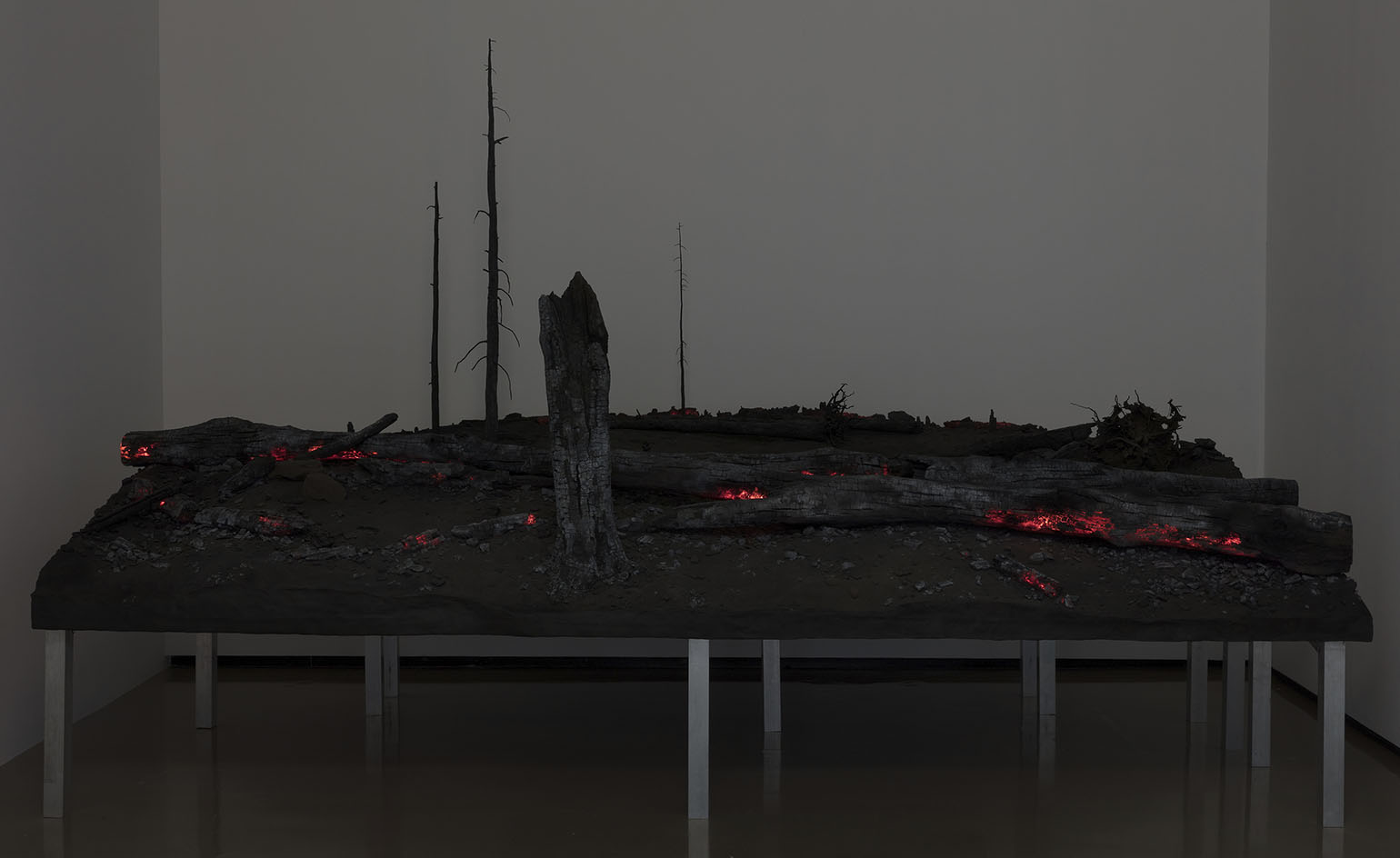
Desolation Row, 2016. Photography: Christopher Stach. Courtesy of Paul Kasmin Gallery. © Roxy Paine
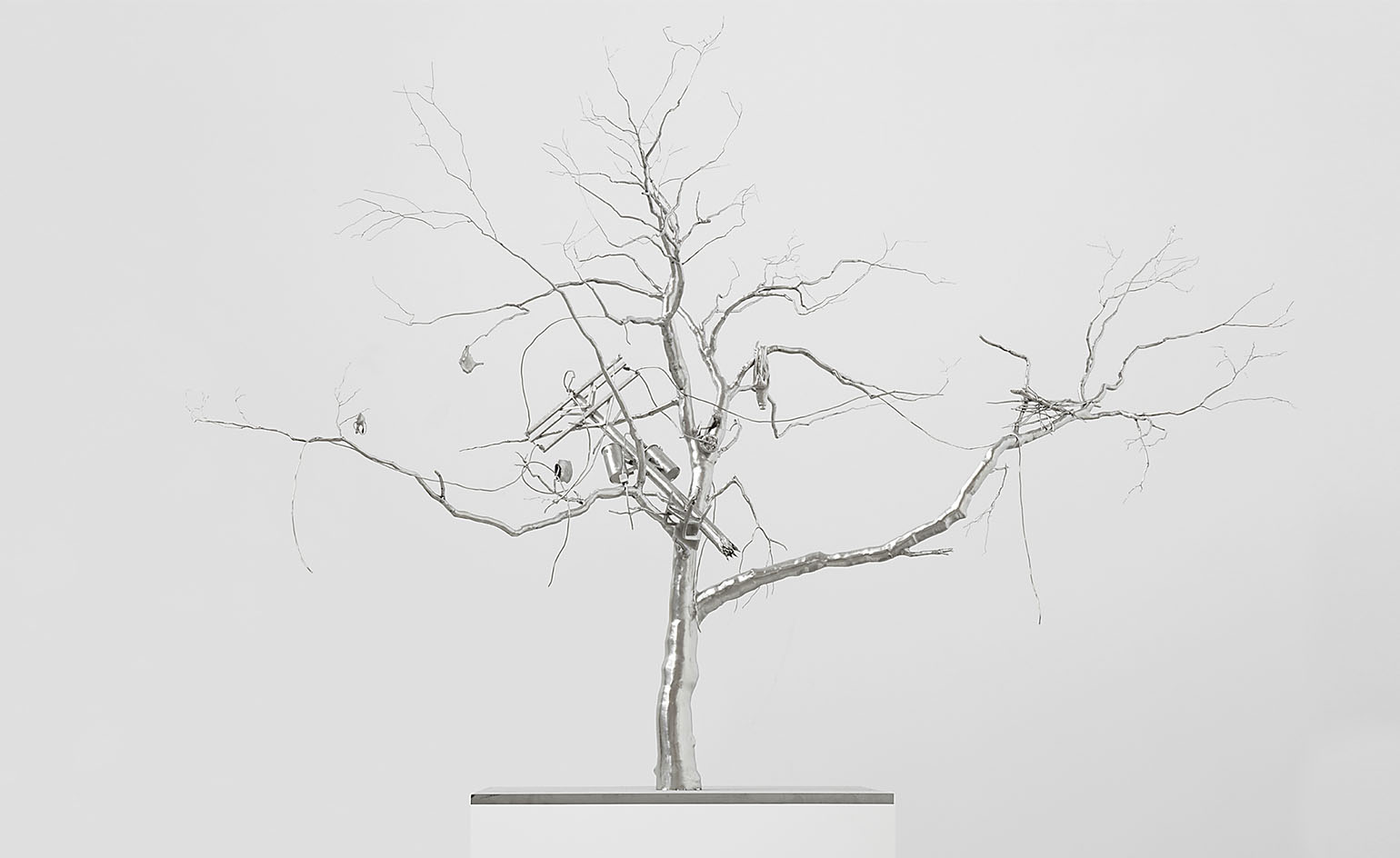
After The Flood, by Roxy Paine, 2017. Photography: Christopher Stach. Courtesy of the artist and Paul Kasmin Gallery
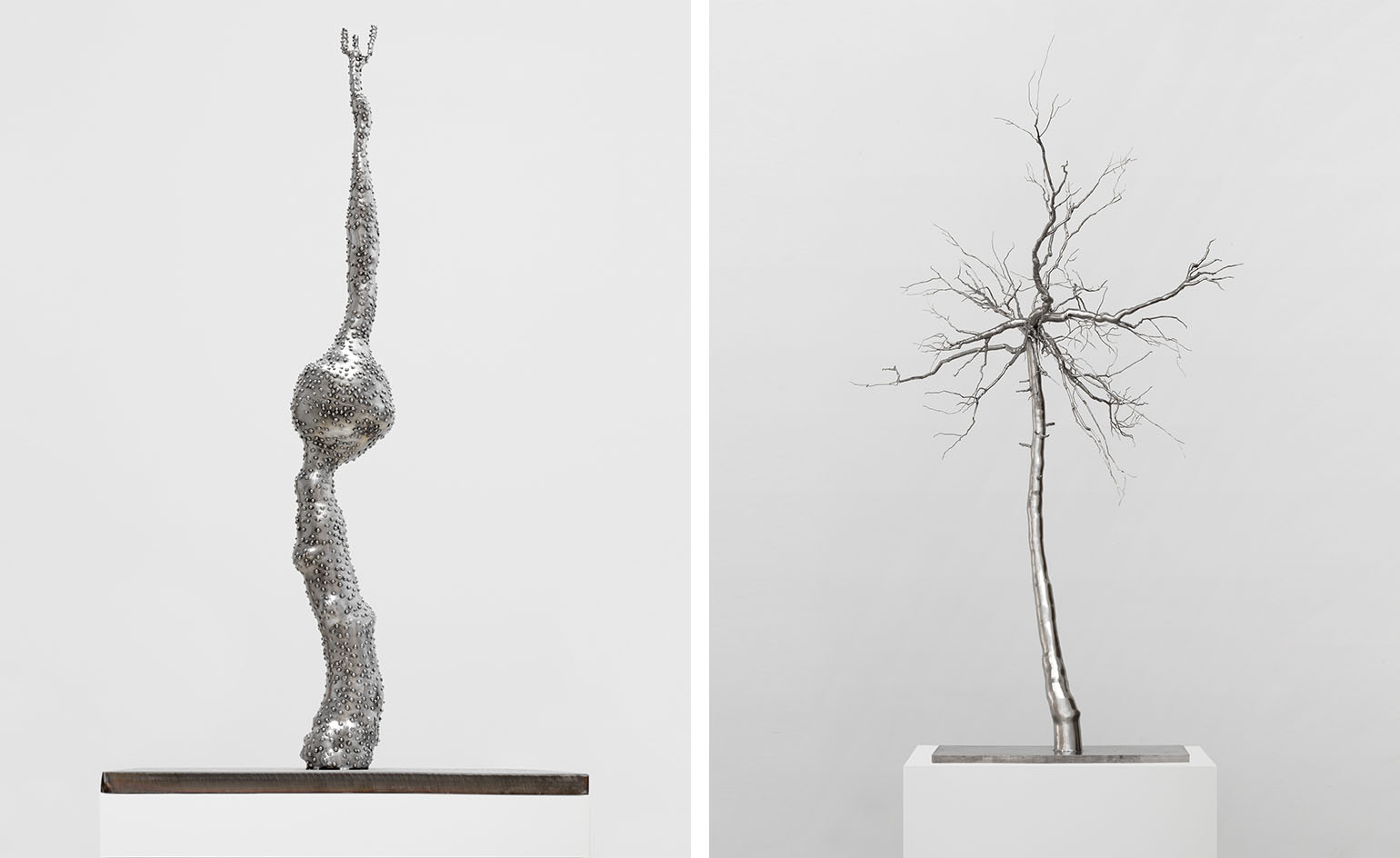
Left, Mental State no. 5, 2017. Right, Neuron Flower Tree, 2016. Photography: Christopher Stach. Courtesy of the artist and Paul Kasmin Gallery
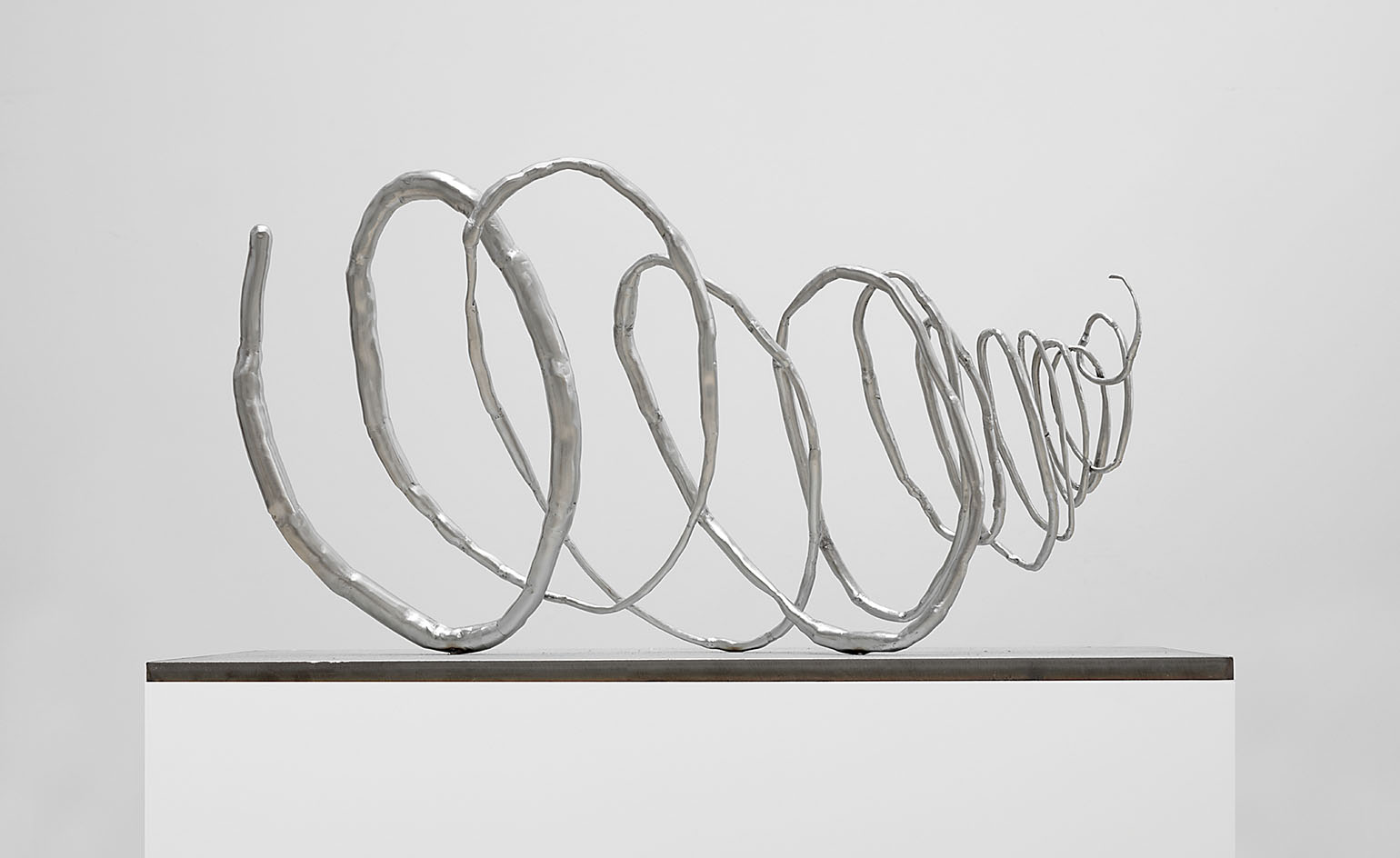
Coil (Mental State no. 4), by Roxy Paine, 2017. Photography: Christopher Stach. Courtesy of the artist and Paul Kasmin Gallery
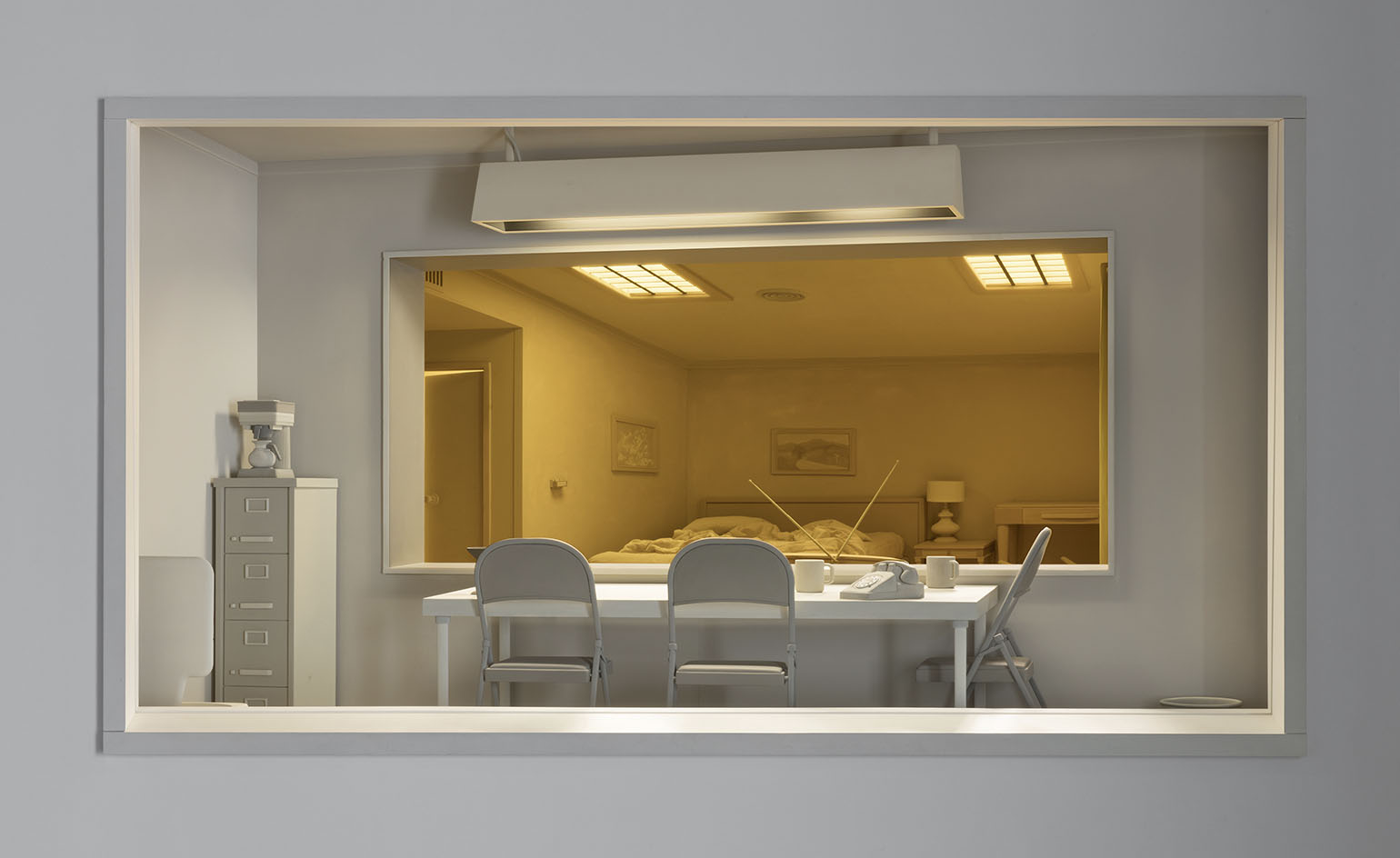
Experiment, 2016. Photography: Christopher Stach. Courtesy of Paul Kasmin Gallery. © Roxy Paine

Left, New Amalgam, 2017. Right, Untitled, 2012-2017. Photography: Christopher Stach. Courtesy of the artist and Paul Kasmin Gallery
INFORMATION
‘Farewell Transmission’ is on view though 1 July. For more information, visit the Paul Kasmin Gallery website
ADDRESS
Paul Kasmin Gallery
293 and 297 Tenth Avenue
New York NY 10001
Wallpaper* Newsletter
Receive our daily digest of inspiration, escapism and design stories from around the world direct to your inbox.
-
 Marylebone restaurant Nina turns up the volume on Italian dining
Marylebone restaurant Nina turns up the volume on Italian diningAt Nina, don’t expect a view of the Amalfi Coast. Do expect pasta, leopard print and industrial chic
By Sofia de la Cruz
-
 Tour the wonderful homes of ‘Casa Mexicana’, an ode to residential architecture in Mexico
Tour the wonderful homes of ‘Casa Mexicana’, an ode to residential architecture in Mexico‘Casa Mexicana’ is a new book celebrating the country’s residential architecture, highlighting its influence across the world
By Ellie Stathaki
-
 Jonathan Anderson is heading to Dior Men
Jonathan Anderson is heading to Dior MenAfter months of speculation, it has been confirmed this morning that Jonathan Anderson, who left Loewe earlier this year, is the successor to Kim Jones at Dior Men
By Jack Moss
-
 Leonard Baby's paintings reflect on his fundamentalist upbringing, a decade after he left the church
Leonard Baby's paintings reflect on his fundamentalist upbringing, a decade after he left the churchThe American artist considers depression and the suppressed queerness of his childhood in a series of intensely personal paintings, on show at Half Gallery, New York
By Orla Brennan
-
 Desert X 2025 review: a new American dream grows in the Coachella Valley
Desert X 2025 review: a new American dream grows in the Coachella ValleyWill Jennings reports from the epic California art festival. Here are the highlights
By Will Jennings
-
 In ‘The Last Showgirl’, nostalgia is a drug like any other
In ‘The Last Showgirl’, nostalgia is a drug like any otherGia Coppola takes us to Las Vegas after the party has ended in new film starring Pamela Anderson, The Last Showgirl
By Billie Walker
-
 ‘American Photography’: centuries-spanning show reveals timely truths
‘American Photography’: centuries-spanning show reveals timely truthsAt the Rijksmuseum in Amsterdam, Europe’s first major survey of American photography reveals the contradictions and complexities that have long defined this world superpower
By Daisy Woodward
-
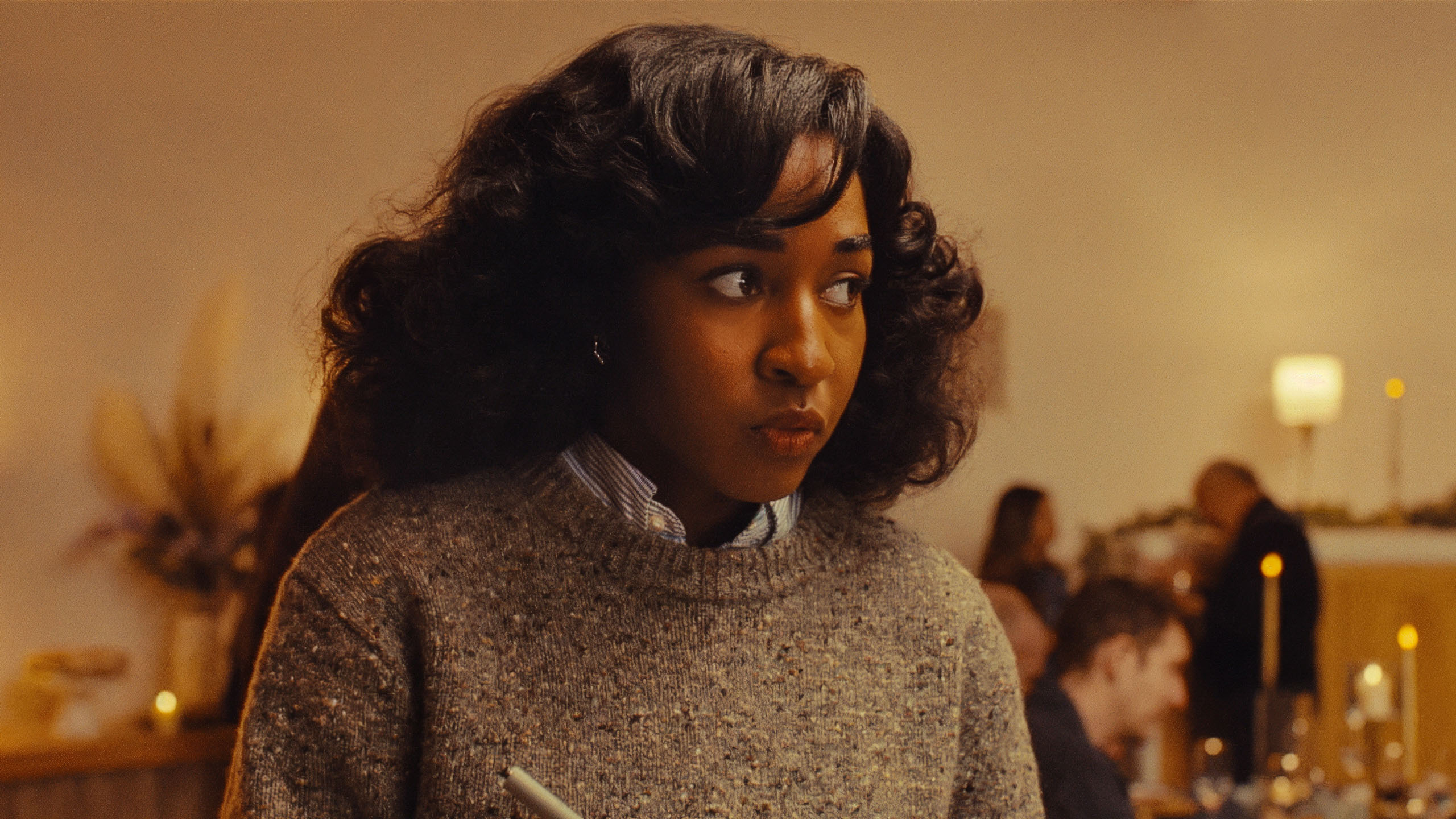 Sundance Film Festival 2025: The films we can't wait to watch
Sundance Film Festival 2025: The films we can't wait to watchSundance Film Festival, which runs 23 January - 2 February, has long been considered a hub of cinematic innovation. These are the ones to watch from this year’s premieres
By Stefania Sarrubba
-
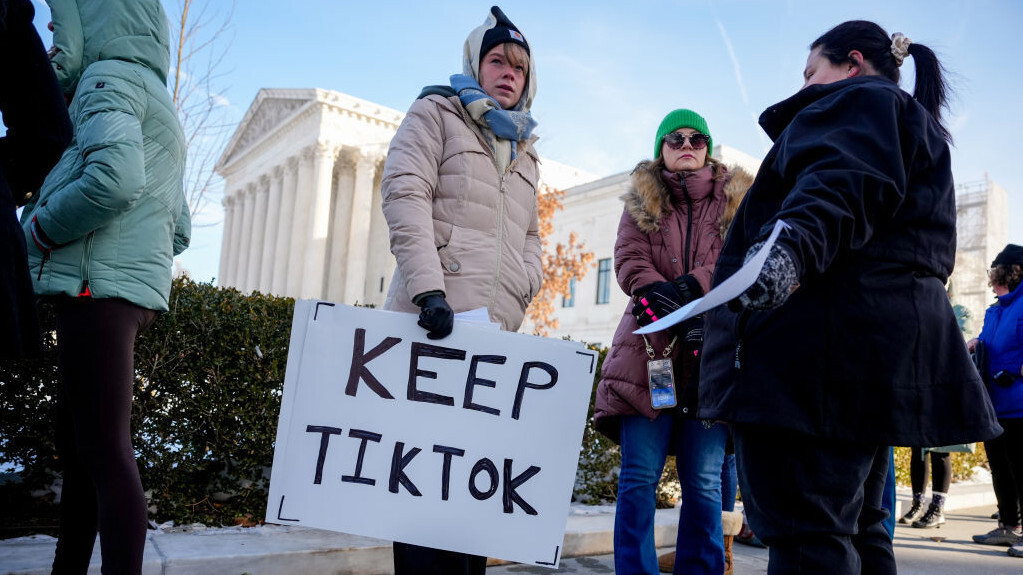 What is RedNote? Inside the social media app drawing American users ahead of the US TikTok ban
What is RedNote? Inside the social media app drawing American users ahead of the US TikTok banDownloads of the Chinese-owned platform have spiked as US users look for an alternative to TikTok, which faces a ban on national security grounds. What is Rednote, and what are the implications of its ascent?
By Anna Solomon
-
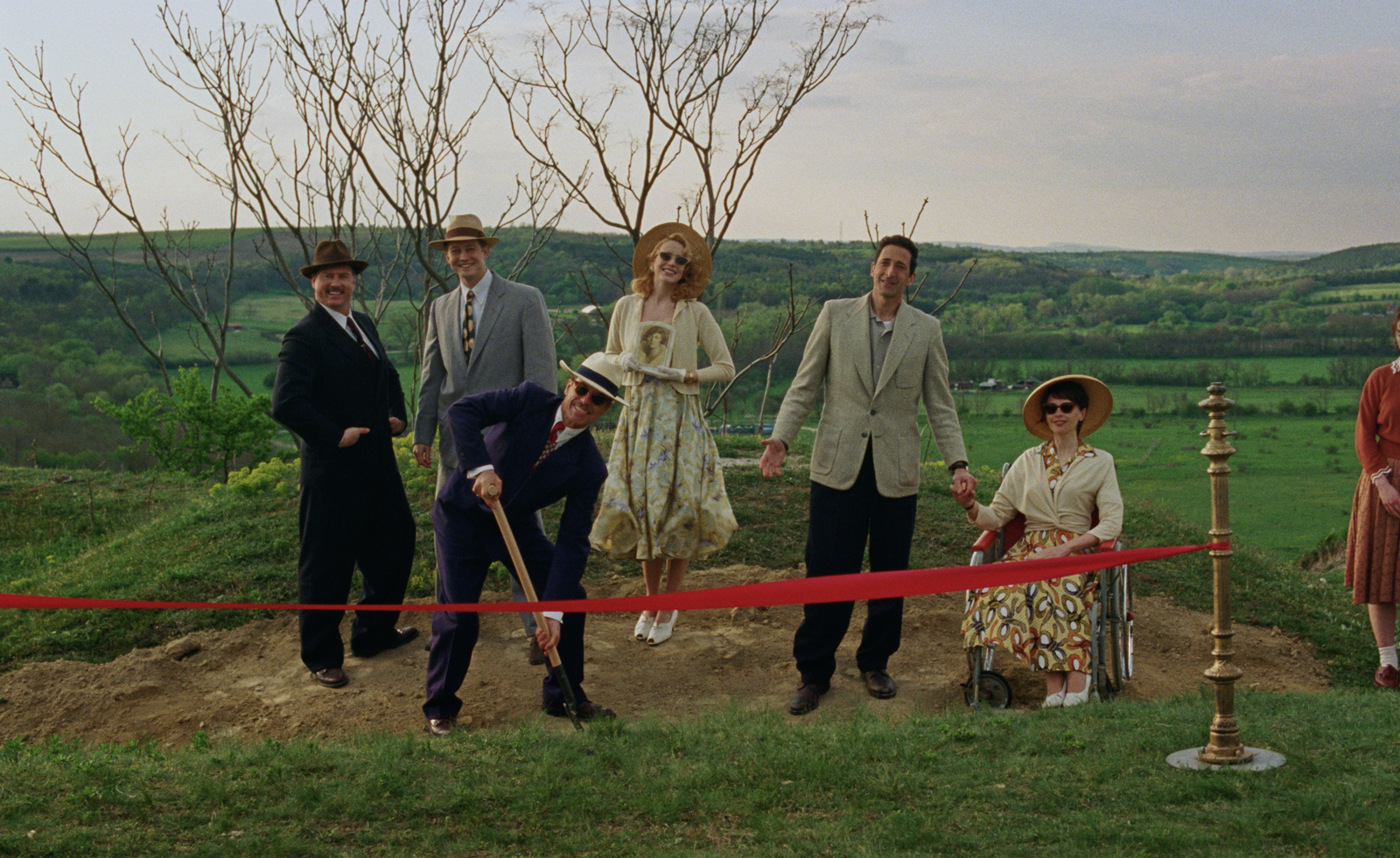 Architecture and the new world: The Brutalist reframes the American dream
Architecture and the new world: The Brutalist reframes the American dreamBrady Corbet’s third feature film, The Brutalist, demonstrates how violence is a building block for ideology
By Billie Walker
-
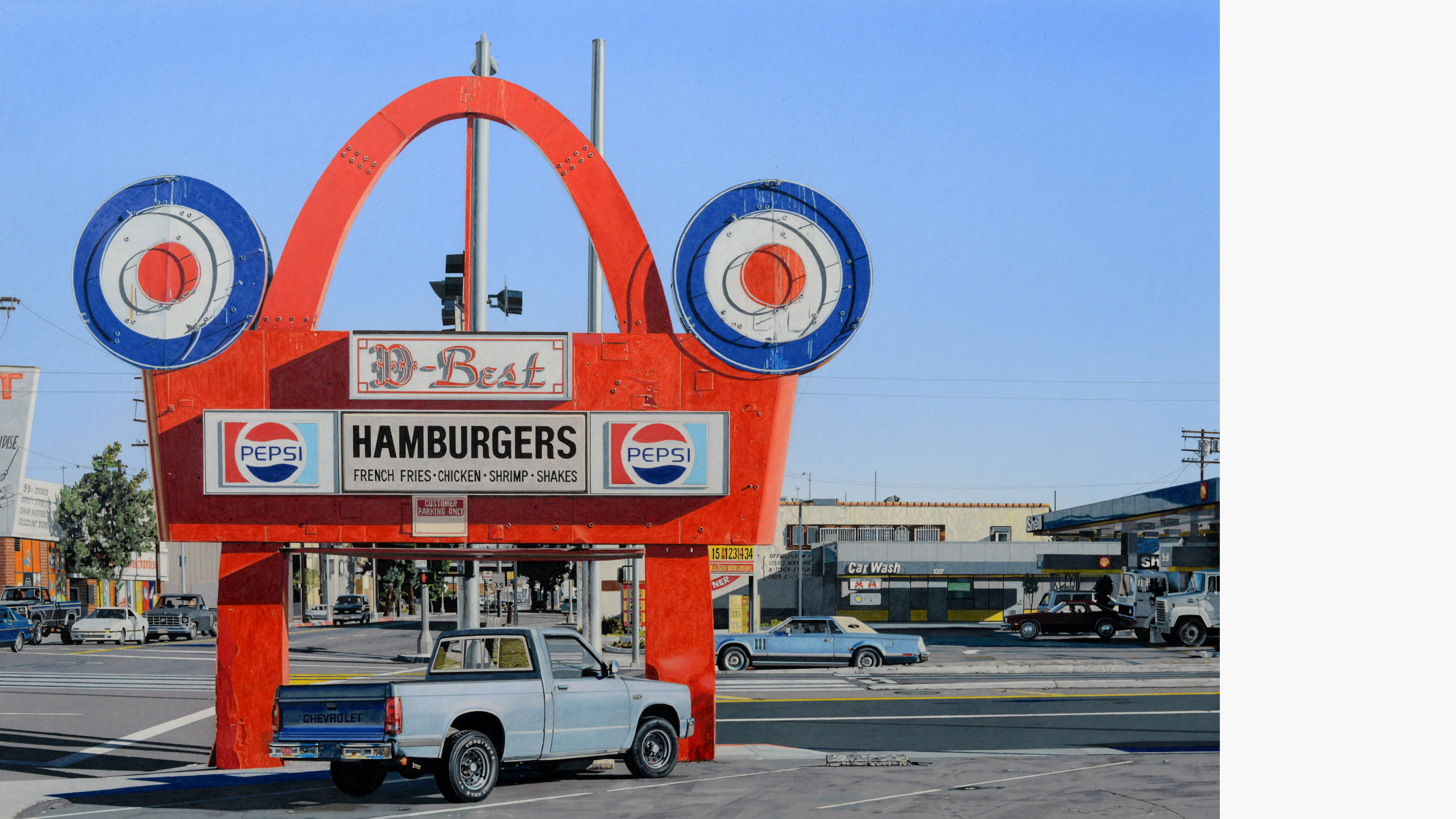 ‘Gas Tank City’, a new monograph by Andrew Holmes, is a photorealist eye on the American West
‘Gas Tank City’, a new monograph by Andrew Holmes, is a photorealist eye on the American West‘Gas Tank City’ chronicles the artist’s journey across truck-stop America, creating meticulous drawings of fleeting moments
By Jonathan Bell